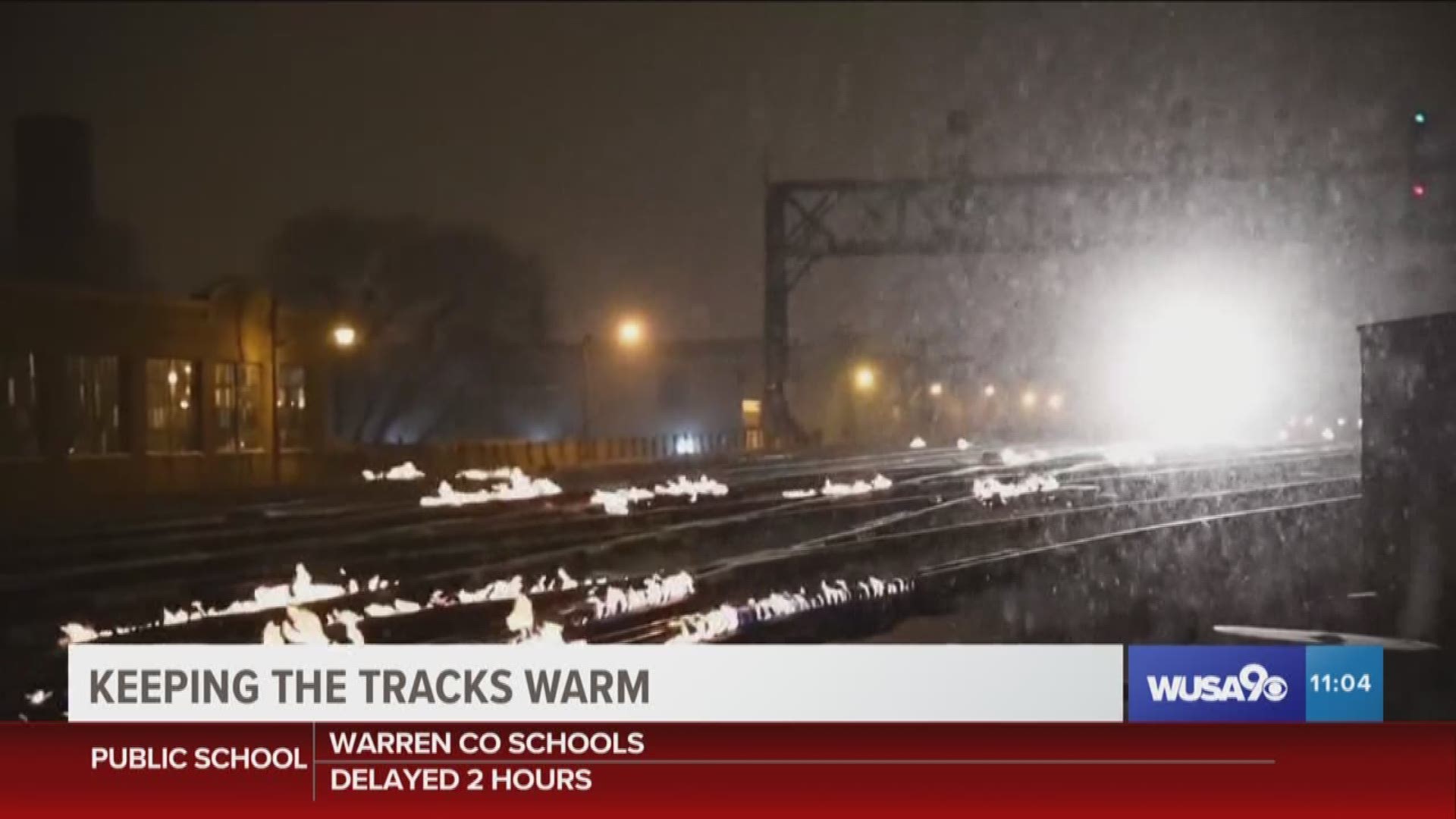WASHINGTON — You have probably seen the images of train tracks, set aflame in frigid Chicago where temperatures reached 21 below zero on Thursday morning. But what about our area?
Metro spokesman Dan Stessel said while the cold in our region creates additional maintenance challenges, it is not using fire, at least right now. WMATA does have some of the gas-fed, open-flame track heaters that we’ve seen being used on the Chicago’s Metra commuter rail system.
Open-flame heaters keep movable sections of track (called a switch) free of snow and ice. Switches, which are the only parts of rail infrastructure that move, are crucial. Without them, trains would be forced to stop running.
"Metro has switch heaters that are open flame," Stessel said. "They are off currently because it’s not snowing." Metrorail’s switch heaters are used to melt frozen precipitation as soon as it touches rails.
A post on the website of Chicago’s Metra, similar to Maryland’s MARC, underscores that tracks are not actually set on fire and the practice does not put trains or passengers at risk, though wooden rail ties do have to be replaced faster than usual.
"Winter weather will always be a challenge for the railroad, and though no railroad is free of switch issues, innovations like the switch heaters at A-2 help alleviate some of those obstacles," the post stated.
Open flame is also used to heat critical spots where super-cold rails shrink and peel away from each other, causing an opening between two bands of tracks. Metro uses track heaters to fix this problem, but not with an open flame or when trains are running.
Amtrak said it does not use open-flame heaters along the busy Northeast Corridor, but does have electrical switch heaters in some areas.
"Amtrak inspects switch heaters in affected areas to make sure they are in good working order," Amtrak spokesperson Kimberly Woods said. "During cold weather, Amtrak activates switch heaters, lubricates the switches, and treats them with anti-freeze agents."

